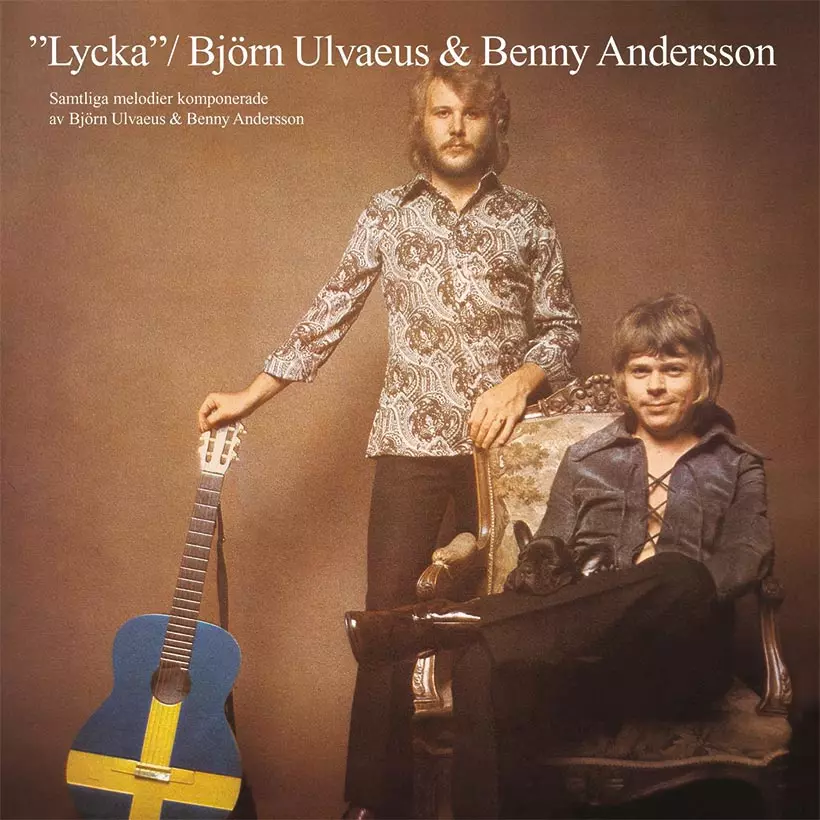How do you follow a part in a hit band? The obvious answer, of course, is to find a role in a bigger one – easy enough to suggest, but far harder to achieve. So while Benny Andersson’s run in Swedish beat group The Hep Stars looked a promising enough springboard, and Björn Ulvaeus’ spell as one of The Hootenanny Singers helped secure him valuable exposure, no one would really have considered the pair likely candidates to end up as one half of the world’s biggest pop band of all time. And yet on their first album together, Lycka, which was released in November 1970, you can hear the genesis of ABBA. And it’s something of a revelation.
Listen to Lycka on Apple Music and Spotify.
While pop may have been suffering one of its periodic global slumps in 1970, there was still a solid enough interest in singer-songwriters who could craft melodies that undercut the bombast and bluster of the predominant rock fraternity. This 11-track original album was originally conceived as a showpiece for Benny and Björn, who, while under the mentorship of Stig Anderson’s Polar Music, were keen to expose their work more widely. But that’s in no way to suggest that what emerged are simply half-cooked ideas ready for someone else to warm up. While there is sometimes a palpable sense of the pair looking backward – a handful of these tracks, such as the second, “Nånting är på väg,” might have come from a mid-60s beat group of the style Benny had not long left – there is an emerging confidence in the songs and, crucially, that appetite for the experimentation that was to serve the supergroup so well across the eight ABBA studio albums to follow.
The folk influences on Lycka are obvious enough and, for the unfamiliar, the looping rhythm of the Swedish language at times adds to the sense of the unexpected. The yearning title track, translated as “Happiness,” sounds like an early Elton John piano ballad and was paired with the folky “Hej, gamle man!” as the album’s first single, the latter topping the radio-play listings in the duo’s homeland. It’s immediately apparent as to why. Here you’ll experience those soaring vocals from Agnetha Faltskög and Anni-Frid Lyngstad – actually the first time the two couples recorded together (Björn and Agnetha were already engaged by this point). Listening to it today feels a bit like discovering a forgotten ABBA track in the back of the vault. Astonishingly, all of the ingredients for the band are here already in this song, which opened Lycka’s original second side.
It was this pop sensibility that shaped the direction of the two songwriters. Elsewhere, the influence of bands such as The Turtles is clear, while the meandering “Ge oss en chans” sounds a bit like Procul Harum or the earliest Status Quo hits – all blustery psychedelia sweetened up for mainstream tastes. Still, “Kalles visa” is the most entertaining thing here – imagine Benny and Björn joining glam rockers The Sweet and you’ll get the basic idea.
Heavier tracks such as album closer “Livet går sin gång” are outnumbered by lighter songs the likes of “Liselott” (featuring a writing credit for Agnetha), which more closely mirror the schlager style that’s dominated continental pop for decades. A handful of other artists recorded covers from Lycka, but none had much success with their selection, though Anni-Frid revisited the title track on her Benny-produced debut LP, Frida, which was issued in 1971.
While no one would pretend that this is an ABBA album, much of what we love about that formula is clearly in evidence. At Lycka’s heart is the brilliance of Benny and Björn’s songwriting, which creates a rich but eclectic tapestry across the album’s 11 tracks, rewards with repeated listens, and offers some euphoric immediacy too.



